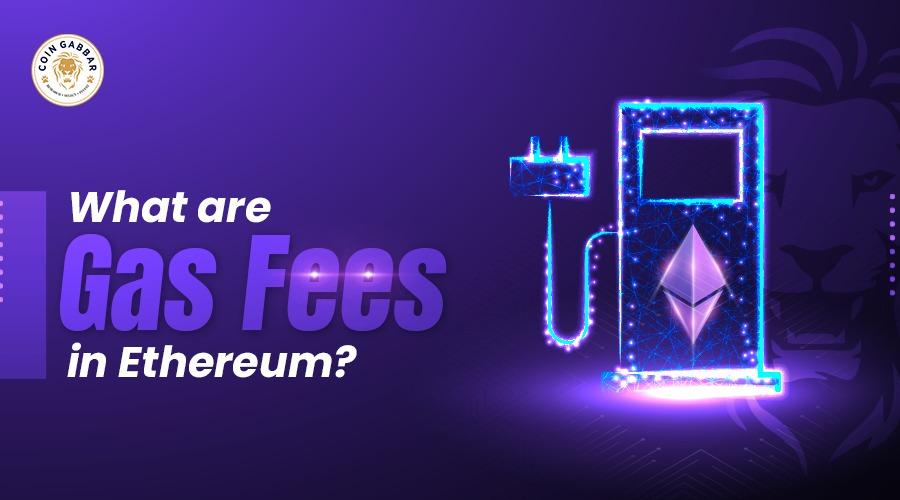WhatareGasFeesinEthereum?AndHowtoReduceThem
Contrary to what many believe, blockchain technology is way beyond the single-use case of cryptocurrencies. As we move forward, it is becoming the foundation of decentralized development and Ethereum is at the forefront of this massive shift. The ever-increasing number of DApps are flourishing in the development ecosystem of the Ethereummainnet. However, anything that offers a great value comesatacostandEthereumisnodifferent. All Ethereum users are bound to pay a specific amount of the transaction as a fee for running thedecentralizednetwork.Thiscostofthetransactionhasincreasedsubstantially asthenumberofusershasbecomepartoftheblockchain.
WhatisEthereumGasFee?
Ethereum is a blockchain that validates its transactions using a proof of work consensus mechanism. Ethereum transactions are validated by the miners who are computing the complexarbitrarypuzzlestoaddthenextblockontheEthereumblockchain.

This process of validating transactions not only requires high computational power but also consumes a sizable amount of electricity. Nodes validating these transactions are called miners and they are compensated for the cost involved in the process. Users utilizing the Ethereum blockchainbearthetransactioncostintheformofafee,popularly known as ‘Gas’. Ethereum gas fees vary for users depending upon the traffic present on theblockchainataparticulartime.
HowDoEthereumGasFeesFunction?
Ethereum has over 500 thousand daily active addresses, making it one of the busiest blockchain networks and one of the busiest blockchain networks intheworld. Asnewer decentralized applications are built on Ethereum, the network is only getting busier with each passing day. This increase in the blockchain traffic directly determinestheGasfees ontheEthereumnetwork.
There is no upper limit on the requested number of transactions on Ethereum but the number of miners validating the transactions are limited. This creates a gap between the demand and supply of the miners as they can choose only a certain number of transactions. Due to this, transactions offering higher gas fees are prioritized by the Ethereum miner. The gas fee increases if there isahighernumberoftransactionrequests andreducesastheblockchaintrafficgoesdown.
HowtoCalculateEthereumGasFees?
Transacting on Ethereum is getting costlier as the traffic on the blockchain is increasing with time However, the gas fees for all the transactions on Ethereum are not the same andcanvarydependinguponthecurrentblockchaintraffic
There aredifferentmethodsusingwhichyoucanreduceyourgasfeesbutbeforelearning those methods you should know how gas fees are being calculated. Understanding how thegasfeesarecalculatedcansavehundredsofdollarsforyouinthelongrun.
Ethereum gas fees are calculated in terms of ‘Gwei’, a smaller unit for ETH. One Gwei can be equated with 0.000000001 ETH, making it perfectly small for calculating thegas fee. London upgrade in the Ethereum network changed the formula for calculating the gasfeeandthenewformulaismentionedbelow:
Total Gas Fee = Gas Unit Limits * (Base Fee + Tip)
Gas limits are a cost that the users are willing to pay for a particular transaction. Depending upon the nature of the transaction gas limits can differ. The base fee is that partofthegasthatdependsonthecongestiononthenetwork.Thelowerthetrafficonthe network, the lower is base fees for your transaction. Andlastly,thetipistheamountthat
users add to the transaction to ensure that their transactions are being picked up by the miners on a preference. The price rise in the ETH can also be held accountable for the riseintheoveralltransactioncostasthepriceoftheGweihasincreasedaswell.
MethodstoReducetheGasFees
Once you know how to calculate your gas fees we can proceed towards learning the methods to reduce them You can substantially reduce your Ethereum gas fee once you know the proper techniques to do so Here is a list of some things you can do to ensure youarenotpayingafortunefortransactingovertheEthereumblockchain.
TimeYourTransactions
The massive number of applications running on the Ethereumblockchainhasmillionsof users. This flourishing ecosystem causes high congestion on the network as the transactions do not process at the same speed as thenewtransactionsenteringthequeue. This causes the miners to prioritize transactions with higher tips and this eventually increasesthegasfees.
UseLayer-2Solutions
The Dapps built on the foundations of the Ethereum mainnet face severe throttling in transactions during the network’s rush hours. This severely affects the applications' usability and overall userexperience.Todealwiththesechallengesandassistthescaling, layer-2 solutions for the Ethereum network were developed. These layer-2solutionsuse networkroll-upsandmovethemainnettransactionstothesidechains.
DAppsandTreasuryManagers
In the Ethereum ecosystem, many decentralized applicationsandtreasurymanagersoffer services for bundling up multiple transactions and collectivelytransactingthem Thisnot only increases the treasury operation's efficiency but also reduces the transaction cost drastically Utilizingthegastokens
Once you remove your storage variables on the Ethereum network, you are rewarded with some of the ETH, known as gas tokens. These gas tokens can be redeemed while paying for your future transactions on Ethereum. There are differentmethodstoearngas tokensfrommarketfluctuations;thosetokenscanbesavedforfutureuse.
HowEthereum2.0WillChangetheGasFees?
The most awaited Ethereum merge is around the corner and everyone is expecting something positive about the gas fees However, as per the sources, Ethereum merge is focused on moving from a Proof of Work validation mechanism to a Proof of Stake protocol. This will increase the scalability within the network by speeding up the transactionsby10,000times.
Accurate impacts of the merge on the transaction cost cannot be determinedbeforehand, however, with increased efficiency in the Ethereum network, transaction cost should go down. Contrary to this, some blockchain experts are of the opinion that the merger will not reduce gas prices on the network as gas prices are subjected to the blockspace demandandnottheconsensusmechanism.
FinalThoughts
Ethereum has become the home of new blockchain innovation butitscongestednetwork and costly gas fees are making it unaffordable for many. To unleash the true potentialof Ethereum development, the network has to find a way to deal with its higher gas in the upcoming updates Forthosewhoarewillingtoputinsomeextraeffort,layer 2solutions providegreatvaluewithouttheneedtomovetoadifferentblockchainnetwork
Industry experts are also testing multiple technologies to tackle the great Ethereum gas challenge and make it accommodating for all. Meanwhile, you can try out the different methodsmentionedabovetoreducethetransactioncosttoapayablelimit.
